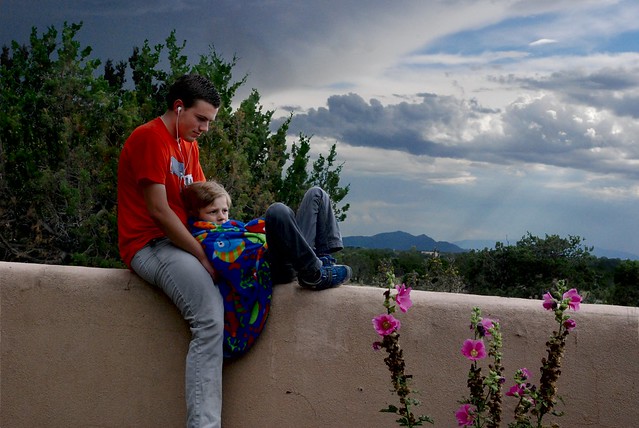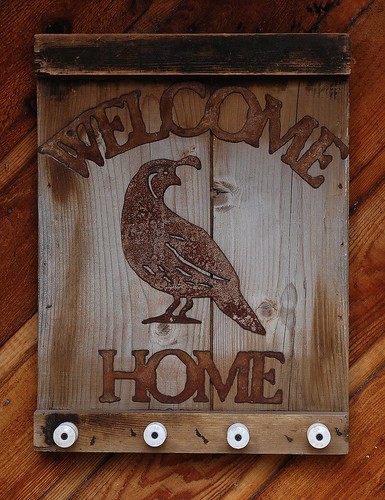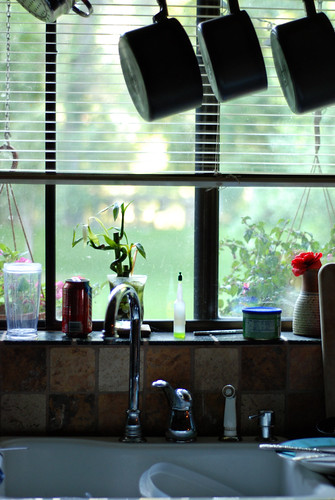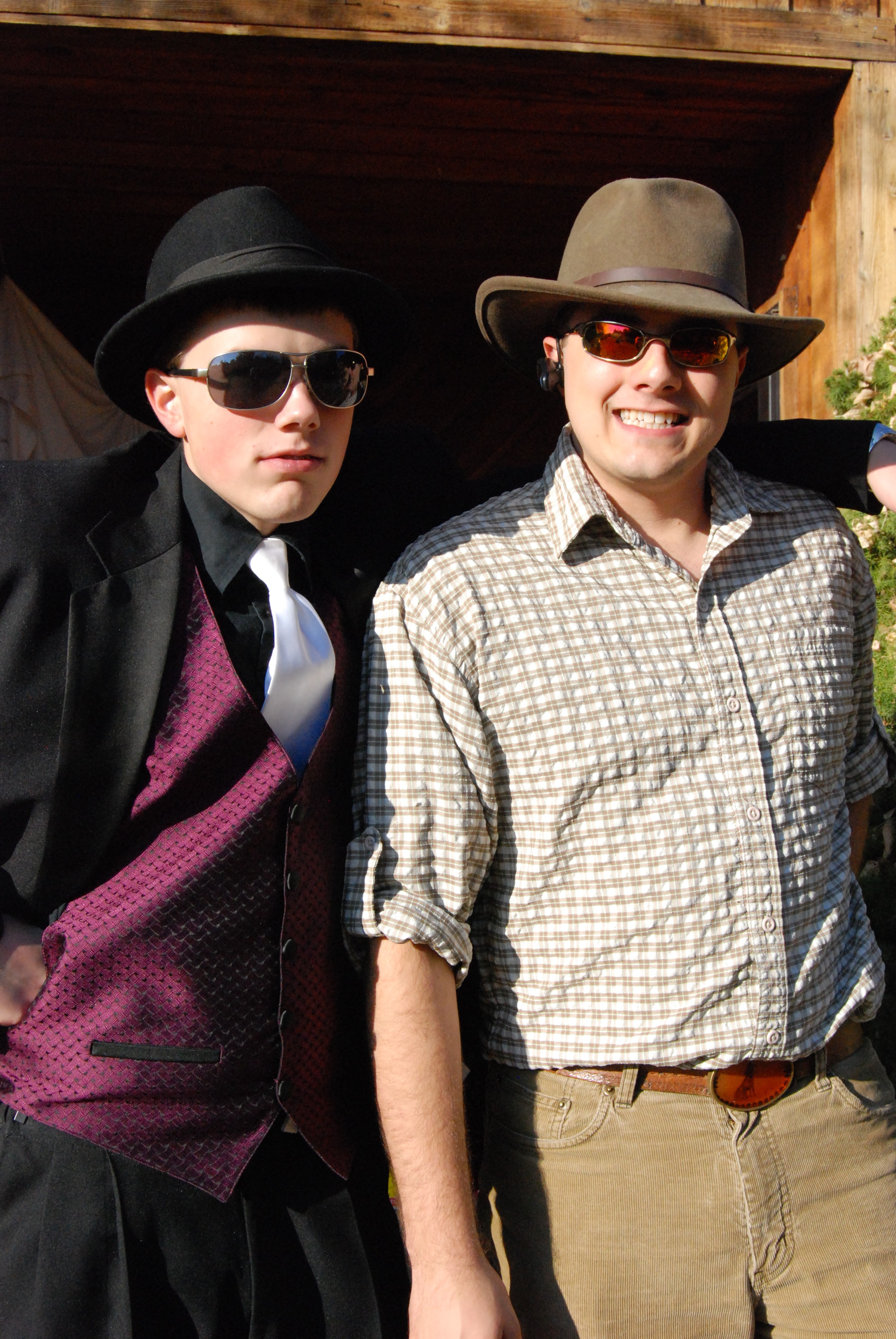First of all, I learned a few more things, and here is the finished composite. The lighting still isn’t right, but I think it works pretty well. I think the real secret to doing something this complex is just time. How long you are willing to attend to the detail. Evidently, I like doing this—if you can get an otter to hold still for three hours, tongue between her teeth and eyes narrowed, you must be asking her to do something she actually enjoys doing.
My home is not in Santa Fe. And yet part of my heart is left there. All of my adult life, I have found that—knowing there is going to be even the most temporary separation—something in me has to prepare for it; I pull back a little, becoming a sort of outside observer. I say, “a sort of” because it’s not real observation. I begin to look at things a little sideways, and I refuse to look at some things at all.
When Gin, my first, moved into her first college apartment, it was in the same town as home—but a world away. She had moved her stuff over there, and had come home for the last of it, driving a car we had helped her into. This was not the kind of situation where both parents and kid are going, “Whew—can’t wait till this person is OUT of here.” It was just a necessary next step in life, and I wished her very well with it, hoping she had fun, that she made friends and hung out and really enjoyed herself (it was a church university, so “having fun” carried the word “responsible” with it in caps).
I walked her out to the car, my beautiful saxophone playing daughter—taller than I was (am), beautiful, capable. I kissed her and hugged her and she got into her car, started it up, turned a U in the street, waved at me and drove off down the street. On the back of her car was a single bright yellow leaf. As she accelerated, the leaf was scooped up into the air behind her. As the car wen on down the street, the leaf spiraled slowly to the ground, landing – bright against the asphalt – as the car disappeared around the corner.
For a moment, I stood there. Silent road. Bright leaf. And then I cried. My house now had a gaping hole in it where her life had begun, grown – a shimmering, laughing, musical life – and now had been removed elsewhere. I didn’t know how I would survive it.
We live on a long, rectangular loop. When you stand at the end of my driveway, you can see the end of it, the corner, where the road takes a slow ninety degree turn to the south. I don’t know how many times I have stood at that juncture of driveway, sidewalk, road and watched a quicksilver box of metal full of my heart just disappear. My parents. My sister. My brother. Now, over and over, my children. I’m always afraid there will be crash, just out of my sight, that turn is so blind.
But it is a loop. And every one of those cars has come back. Again, over and over. You just never know, do you? I didn’t know this about living. I mean, I knew it—but only as part of a story. I didn’t know you had to actually go through this, saying good-bye to your parents, to your children. Now I know it. But I only look at it sideways, the way the dogs won’t look straight at a shoe they’ve chewed up.
And there’s nothing I can do about it. This is the way of the earth. And while this may be the place for loving, it is also the place where time moves in only one inexorable direction – and that’s so often simply away. Perhaps this is why I continue to take pictures. As though I will find a way around this fact.
I guess my point here is that I had to leave Santa Fe. And these are the pictures of that part of the story. Another horrendously long, more-than-you-wanted-to-know piece. But maybe I just do this so I know where I’ve been:
I shot this one from the kitchen yard because it struck me how Santa Fe these colors are, the earthy brown orange of clay and stucco, the purple and blue and black of paints. The colors are subtle, but pervasive in the culture.
Back through the southwestern desert. Brave ridges of colored rock. I wonder how long the trip would take if our land were as flat as Kansas and the road a straight line? Notice, if you will, the sunflowers, growing beside the road. These guys are everywhere. And I didn’t get the artsy-agricola-poetae-amat sort of shot of them I wanted to. Sometimes the patches of yellow and black are very thick; sometimes they are just clumps. If you look hard in all these road pictures, you’ll see them, because they seem to actually knit the states together in this region.
On the way back, we stopped whenever we wanted to. Sometimes we actually turned around and went backwards, just to catch a shot of something fascinating. Sometimes we got lost, looking for things. For example, if you are going to Ojo, New Mexico, heading north of Santa Fe, take the right hand fork at the tiny exit. There, you will find Tierra Woolen mills.
Murphy, patiently stretching, perhaps wondering why his mother wanted to find this place?
Tierra is interesting. It’s a sort of four corners of culture, marked by native American styles with an underpinning of New Mexican Spanish heritage—and the ever sturdy culture of sheep raising and wool working.
This is the largest structure I could see in the tiny, ancient town. In the store, alongside the woven rugs and hanks upon hanks of gorgeous wool, are offered ornate wire crosses and small bits of Catholic culture and iconery.
In the back is a huge room full of looms and wooden shelves. The light is beautiful and the wood glows.
The folks are chatting here; life is not frantic, just productive.
And here is Olivia, who took us in like visiting family the moment we crossed her threshold. Especially Murphy, the man with the open face. The fact that he could drop easily into Spanish also makes him very lovable. Notice the bright colors I was purchasing, slightly, delightfully variegated within the hue. He does not carry a purse unless I ask him to, by the way.
I find that I love sweeping curves, especially on slopes and against the sky. I was going to write, “against a dramatic sky,” but that would have been redundant.
Again, these high desert mountain valleys. I took another shot of the blue barn, but you don’t have to look at it. Same as all the others. Just as fascinating to me.
So instead, I shot a regular old red gambrel, nestled against the easy rise of a hill, hidden in wild and rugged ranks of trees.
An interesting life, these people must lead. I didn’t see animals, and wonder what grazes these pastures so neatly. All these places, studding the grass and hillside – far from any urban intrusions (so far). The people must work hard every flipping day – this isn’t the kind of job where you can call in sick, figuring somebody else will cover the counter for you. I wonder where their money comes from and where it goes. I wonder where there water and electricity comes from? Because they’ve got to be way off the main grids.
One of my favorite places. Brenda works with local artists and carries silver and stone work the is unique. And I mean that literally. The few pieces I am lucky enough to own are unlike anything I’ve seen anywhere else. Genevieve and her husband make the loveliest, most elegant and simple-lined things ever.
We whipped by this ranch, moving at seventy miles per hour along a very narrow, raised two-lane country highway. I caught the sight of this gorgeous, perfect colt out of the tail of my eye, and made Murphy turn around (which was very nearly impossible) because I had to get a shot of him. I needed to understand his shape. And a colt is not something you can just catch next time you drive through. But the road was higher than the field, and there was no shoulder, and Murphy kept yelling, “Mom, here comes a SEMI truck. We really gotta go. MOM!!!!” while I was trying to catch a picture I never did get.
Well, have you ever fallen in love at first sight? If I’d had the trailer, I’d have driven down that driveway and made a deal. What a gorgeous little guy.
A bowl of trees. A shock of sky.
And this. A coupla times we caught what we thought were more than just your normal street-lacing of sunflowers. This time, we actually stopped to investigate.
This is me, with the sunroof open and me sticking out of it like a cake topper, shooting this unbelievable vista: miles and miles of formally cultivated sunflowers. Kansas has its corn; Colorado (are we still in NM?) has acres, worlds of this. Notice what they look like when the wind blows through them.
Great cats, so many. Grown for their seeds, you think? I clambered back down into the car, and on we went.
This is the tinest ever airport, just over the border of Colorado? No. I think our state, this is. Anyway, on the way down, I was driving, and just before we saw this little yellow airplane, I caught sight of what had seemed like a huge swath of wild flowers. Non sunflower ones. And I wanted to stop and look at it on the way home. But we couldn’t remember where the dang thing was and spent the first seven hours think we’d missed it.
But no. Here it was. Another shot from the sun roof. But I couldn’t let it go at that, because you can’t really get the amazing feel of what this was. You know how they say, “You’ll never see this from the back of a running horse?” Well, I saw this from the innards of a speeding car.
Someone, for no practical reason, planted an entire little field, a field protected by ancient fences, with nothing but wild flowers.
Look at them – brilliant red poppies, blue lupine (or whatever they are), purple things and white ones. No, not all poppies. Maybe an acre in a swath beside the road in the middle of literally nowhere. Who did this? I want to meet this person.
Gorgeous, delicate color.
With the dominant sunflower in the very middle. I couldn’t get enough of the lace.
With this sky behind, and Queen Ann’s lace pressing at the fences.
Sorry. I just needed more time to see it than we actually had. At this point, we are still on a tiny two laned highway – where huge trucks and lines of cars are whipping by at way over sixty miles an hour. There is a shoulder here, however. To complicate things, right at this point they are doing road work. You’d never know with your back to it, the mess on the road.
And we come over the shoulder of a hill, and there is the alien landscape of the sandstone desert. We are almost home. I was taken with these clouds – and those weird shapes on the floor of the desert.
Okay. Does this look like sky-writing or what? I’m offering a prize (not really. Maybe) to the person who figures out what these clouds are trying to spell to us.
That fat chimney of rock has a tiny cave mouth right at the base of it, in the red rock. I’d have stopped by now to go look at the thing, but the rancher has unkindly fenced me out. He probably fenced it after years of weirdos parking on the side of the road, trekking over there for whatever reason to check that thing out. Drat.
The turtle rock from a more clear perspective.
Red rock. Blue sky. Clouds of note.
And last, but hardly least, the absolute most-heinous-ever misuse of English punctuation I have ever, in my entire effusive life, seen. Worse than any Engrish thing you can imagine (okay, maybe not worst):
What???????? And in letters about fourteen feet high. Maybe “high” is an appropriate word, because I can’t imagine ANYBODY coming up with this weird permutation under any other circumstances. In the road signs, they correct this thing. But – wow – there’s no hiding the original.
M was far more impressed with the lizard on that wall – maybe thirty feet long?
Then, here we are, home again. I tried to find a full yard shot in my flickr to put here, but am shocked that I don’t have any just plain-jane summer shots. I guess I’ll have to fix that. Home, our own yard. Grass. Trees.
This isn’t now. But here are grass and trees. And less than a week later, M moved into his own first college apartment. Who will play in the grass and trees now? Only the puppies. Until there are grandchildren old enough to do it, I guess.
Rivers are good metaphors for time.
I do love my kitchen, though –
the end. Sort of.










































30 Responses to ~o:> Looking Homeward